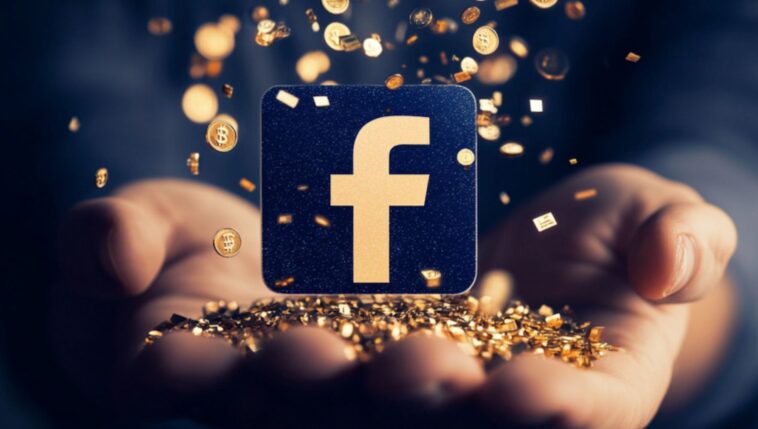
User Generated Content is a term that describes the content created by users around a brand.
Instead of the company itself creating its content, in this case, it’s the users who share experiences in a comment thread, post pictures and videos under a hashtag, tell stories in a forum, or something entirely different.
The key point is that the content doesn’t come from the company itself but from the users’ authentic experiences with the product or service a brand offers.
Let’s take a closer look at why this type of content is particularly valuable when it comes to content marketing.
The value and importance of UGC for modern brands
When you look at the customer journey today, it’s clear that traditional promotion alone no longer determines whether consumers ultimately purchase a product.
When users search for information about a brand today, it’s often the user-generated content that influences their decision to invest in a product.
In fact, statistics show that up to 70% of users trust personal and authentic reviews from other users more than information generated by companies.
User Generated Content, therefore, has a much higher credibility than what advertisements and commercials could ever achieve. This isn’t new—recommendations between consumers, which create social proof, have always been highly valuable.
Moreover, UGC is particularly advantageous content-wise as it keeps content and advertising costs down, meaning the company doesn’t have to rely solely on their internal content.
All in all, user-generated content can help increase credibility and authenticity around your brand, create engagement, and ensure a sense of belonging to the brand.
Types of UGC and how they contribute to branding
User-generated content can manifest in various ways. Below, I’ve compiled the most common examples of UGC and their contributions to branding.
Photos and videos
Authenticity has indeed become the keyword for today’s branding strategies.
As mentioned, users are no longer as interested in seeing polished commercials and ads for products, as these can quickly come across as too “staged.”
Instead, authentic photos and videos generated by users on social media, where products are being used and commented on, can give potential customers a real sense of the product.
In other words, user-generated photo and video content helps showcase the product in the “real world,” demonstrating its actual features.
Blog and forum posts
Today, users increasingly seek information about a product or service through user-generated content on various blogs or forums.
Here, users can share questions and experiences with each other, providing the “authentic” information they’re looking for about a product or service.
Reviews
Positive reviews and good feedback support the brand and its credibility. For users, this is extremely valuable and, in most cases, leads to an investment in the brand’s products and/or services.
Negative reviews can actually also help strengthen the brand, provided the company quickly responds to the negative reviews and shows a clear willingness to improve and meet customer feedback.
How to motivate and facilitate UGC from your audience
For users to create user-generated content, it’s necessary to provide incentives.
It’s important to be clear about the type of content you’re looking for, which should not only benefit the company but also the users. In other words, they should feel motivated to create content.
If we imagine a user who has just received an online order, a company could advantageously send an email encouraging the user to write a review on platforms like Trustpilot via a direct link.
The incentive to write a review could be a discount code or something similar.
If it’s a website that wants to use users’ photos of their products “in-action” or “success stories” using the company’s service, it would make sense to encourage users to take photos or write about their experiences and share them either directly with the website or via a hashtag on social media.
The incentive here would be the re-sharing of the best photos or the most compelling “success stories.”
Acknowledging users’ content will ultimately make them feel connected to the brand.
Legal considerations and ethics around UGC
When sharing User Generated Content as part of your branding, it’s essential to respect the copyright of this content.
This is done by obtaining permission from the individuals who created the content and clearly crediting the original creators when the content is re-shared.
Additionally, it’s important to remember that anyone can use a hashtag or share content under your company’s brand.
Be mindful of whether this content aligns with your company’s values and is something the company can stand behind.
Case studies: successful UGC campaigns
Many companies today use user-generated content as part of their branding with great success.
Below, I’ve gathered a few examples of Danish companies that I believe have hit the mark with their UGC campaigns.
LEGO
Plastic is no longer a resource we consider sustainable, so there has been a need for LEGO to promote the recyclability and durability of their popular plastic bricks, making them suitable for repeated use in new building projects.
This is precisely where we see a successful example of a UGC campaign.
With LEGO Ideas, all LEGO enthusiasts can share their personal and creative ideas with other users, allowing them to use the bricks they already have in new and creative ways.
LEGO Ideas can be found on their website and under the hashtag #LegoIdeas.
Nailster
Nailster is an example of a company I’ve previously worked with and who, in my view, has been successful with their various UGC campaigns.
Here, users are encouraged to share photos of their nail creations on social media and Nailster’s website. This allows other users to see Nailster’s products from a real perspective, in natural light, and in a realistic setting.
Additionally, Nailster has created a forum for nail enthusiasts who want to share experiences, photos, and questions with each other. This forum is currently available on Facebook and has nearly 25,000 members today.
ARLA
Arla has successfully run several UGC campaigns on social media using hashtags like #madglæde and #morgenkraft, which encourage users to share photos and videos of their food routines featuring Arla’s products.
This not only strengthens the usability of Arla’s products but also generates authentic and inspiring content for Arla’s social media.
Using social media to promote and share UGC
The successful UGC campaigns mentioned above are clear examples of how social media is actively used for these campaigns.
It makes sense, as users are already accustomed to sharing content on these platforms, and it’s just a matter of incentivizing them to use a hashtag or tag the company in their content.
Re-sharing this content from the company’s side can happen quickly and effectively through social media, helping to acknowledge the users’ contributions.
There’s also a clear advantage in that users’ individual networks will automatically be exposed to this content and the use of hashtags, ultimately leading to greater brand awareness.
Measuring and analyzing the impact of UGC
User Generated Content is a strategy that becomes particularly valuable when continuously evaluated and adjusted.
To measure and analyze the impact of user-generated content, it’s necessary to set up a series of KPIs that guide the company toward its ultimate goal for the UGC campaign.
These goals could include:
- Increased engagement on social media
- Higher conversion rates or sales
- Increased brand awareness
To measure the impact of a UGC campaign, it’s necessary to have the right analytics tools for the company’s website, social media, email marketing, etc.
Best practices for integrating UGC into your marketing strategy
To integrate UGC into a marketing strategy, it’s necessary, as mentioned earlier, to create incentives for it.
How this is best done depends entirely on the target audience.
For example, if you’re dealing with physical and tangible products, it’s a good idea to encourage the target audience to take photos of these products “in-action” and share them with the world using a hashtag.
Re-sharing from the company’s side helps acknowledge the users’ creativity, which will only create more engagement around the brand.
If it’s a service that can be considered an intangible good in technical terms, it’s beneficial to encourage customers to write a review that can later be featured on the company’s website.
This helps increase the credibility of the service and creates trust around the brand for future customers.
Future perspectives: UGC’s role in digital marketing
UGC will play a significant role in digital marketing in the future. User-generated content will continue to have an immense influence on users’ decision-making processes and purchasing journeys.
In fact, Vogue Business wrote an interesting article about how Generation Z has changed our perspective on a customer’s buying journey through the sales funnel, precisely because of the significant influence that user-generated content has on social media.
It’s clear that the authentic aspect that UGC contributes significantly enhances the credibility of a product more than any advertisement or commercial ever could.















Comments